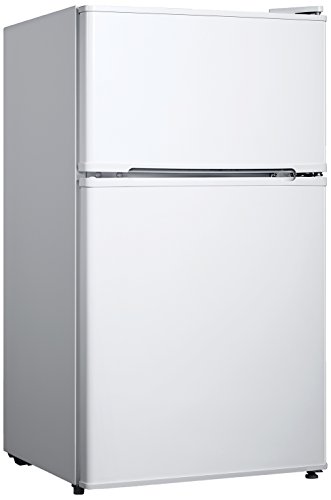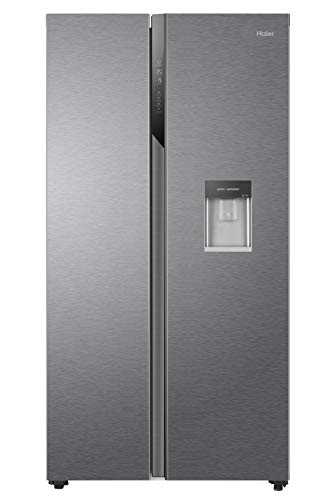
Uk Fridge Freezer
Add a review FollowOverview
-
Founded Date March 12, 1911
-
Sectors Other
-
Posted Jobs 0
-
Viewed 46
Company Description
A Step-By-Step Guide For Choosing The Right Fridges And Freezers
Understanding Fridges and Freezers: The Essential Kitchen Appliances
Refrigerators and freezers are 2 of the most essential home appliances in modern cooking areas. These appliances serve a crucial function in food conservation and waste decrease by ensuring that perishable items remain fresh and safe for intake. This post looks into the different types of fridges and freezers, their performances, and important considerations for choice and upkeep.
Types of Refrigerators
The market provides a range of refrigerator types, each designed to satisfy various customer requirements. Below is a list of the most common kinds of fridges:

-
Top-Freezer Refrigerators
- Most common type.
- Freezer compartment lies above the refrigerator section.
- Typically more economical and energy-efficient.
-
Bottom-Freezer Refrigerators
- Freezer is located at the bottom.
- Permits simpler access to fresh products at eye level.
- Often features pull-out drawers for much better company.
-
Side-by-Side Refrigerators
- Refrigerator and freezer sections are adjacent.
- Perfect for narrow kitchen areas and allows simple access to both compartments.
- Often features water and ice dispensers.
-
French Door Refrigerators
- Combines a bottom freezer with double doors at the top.
- Offers sufficient storage and trendy styles.
- Typically consists of features like temperature-controlled drawers.
-
Compact Refrigerators
- Smaller size perfect for restricted areas.
- Typically used in dormitory, studio apartments, or as secondary fridges.
Table 1: Comparison of Refrigerator Types
| Type | Advantages | Disadvantages | Normal Size |
|---|---|---|---|
| Top-Freezer | Affordable, energy-efficient | Less practical access to the freezer | 14-30 cu. ft. |
| Bottom-Freezer | Simpler access to fresh food | Freezer can be harder to organize | 19-30 cu. ft. |
| Side-by-Side | Easy access, water/ice dispenser | Narrow vs. storage space | 22-30 cu. ft. |
| French Door | Elegant, spacious, arranged | More expensive | 20-30+ cu. ft. |
| Compact | Space-saving, portable | Restricted storage | 1.7-5.5 cu. ft. |
Types of Freezers
Freezers are an equally crucial appliance for food preservation. They can be found in various designs designed to fit different home needs. Consider the list below types:
-
Upright Freezers
- Run like a basic refrigerator with vertical storage.
- Easier to organize with racks and compartments.
-
Chest Freezers
- Large, horizontal design usually using more storage area.
- Maintains temperatures much better throughout power outages.
- More energy-efficient than upright designs.
-
Portable Freezers
- Compact units perfect for outdoor activities or small spaces.
- Often used for camping trips or as temporary storage.
Table 2: Comparison of Freezer Types
| Type | Benefits | Disadvantages | Normal Size |
|---|---|---|---|
| Upright Freezer | Easier to organize | Less energy-efficient, more floor space | 5-20 cu. ft. |
| Chest Freezer | Holds more products, energy-efficient | Harder to arrange | 5-25 cu. ft. |
| Portable Freezer | Compact and versatile | Minimal storage capacity | 1-10 cu. ft. |
Key Features to Consider
When picking a fridge or freezer, consumers must remember numerous functions that can enhance functionality:
- Energy Efficiency: Look for models with the ENERGY STAR certification to save money on electricity expenses.
- Storage Capacity: Evaluate storage requirements based upon family size and consuming habits.
- Temperature level Control: Some home appliances offer digital controls for precise temperature settings.
- Adjustable Shelving: Customizable shelving permits optimal organization.
- Water and Ice Dispenser: Offers convenience however can take up important space inside.
- Sound Level: Sound rankings can influence comfort, specifically in open-concept homes.
Advantages and disadvantages of Having a Fridge and Freezer
While fridges and freezers are vital technologies, they likewise have particular benefits and disadvantages:
| Pros | Cons |
|---|---|
| Protect food lifespan and minimize waste | Need routine maintenance |
| Permit bulk buying and meal prepping | Can be pricey to buy and run |
| Offer convenience and fast access to food | Occupy substantial kitchen space |
Upkeep Tips
To guarantee longevity and optimal performance of fridges and freezers, think about the following maintenance suggestions:
- Regular Cleaning: Clean the exterior and interior occasionally to prevent buildup of dirt and bacteria.
- Check Seals: Inspect door seals routinely for leaks to keep effectiveness.
- Temperature Settings: Keep the fridge at 34-38 ° F and the freezer at 0 ° F for optimum food conservation.
- Defrost as Needed: Chest freezers need to be thawed regularly to preserve efficiency.
- Clear Air Vents: Ensure that air flow isn’t obstructed to improve energy performance.
Frequently asked questions About Fridges and Freezers
Q1: How long can food be kept in a freezer?A: Most foods can be kept in a freezer for several months. Meats and poultry often last 4-12 months, while veggies can last up to 8-12 months.
Q2: How often ought to I clean my fridge and freezer?A: It is recommended to clean your fridge and freezer every 3 to 6 months, or as needed when spills occur. Q3: Can I put hot food straight in the fridge?A: It is advised to cool hot food to space temperature level before putting it in the fridge to avoid
raising the temperature level inside the device. Q4: Why is my fridge running constantly?A: This might be due to a malfunctioning thermostat, clogged up coils, or door seals that aren’t working properly. Fridges and Frydge freezers are vital
possessions to modern-day homes, providing vital services for food storage and preservation.
Comprehending the numerous types, functions, and upkeep requirements can assist customers pick the ideal devices for their requirements and maximize their functionality. Embracing energy-efficient designs not just supports sustainable practices however also contributes to considerable savings on utility expenses, making notified options more important than ever.
